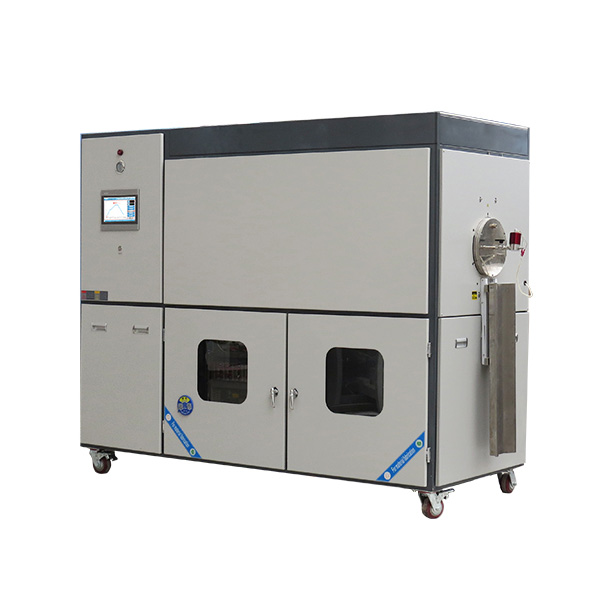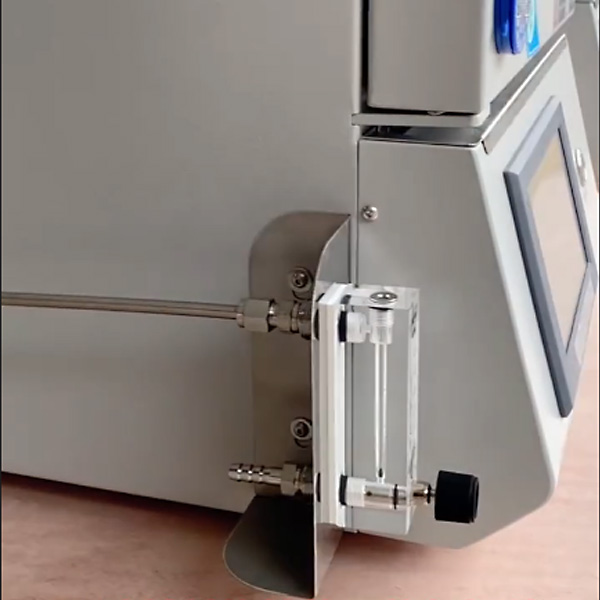The semiconductor industry serves as the foundation of modern electronics, covering all aspects from basic material processing to the manufacturing of complex integrated circuits.
In the semiconductor industry, heat treatment equipment plays a crucial role in the manufacturing process, altering the physical and chemical properties of materials to meet various process requirements.
The commonly used heat treatment equipment mainly includes the following categories:
A vacuum furnace is a type of equipment used for heat treatment in a vacuum or low-pressure environment. It is widely utilized in manufacturing and research fields that require high purity and high precision.
The furnace operates by using vacuum pumps to remove air from the chamber, preventing oxidation and contamination. It heats and cools materials in a controlled environment, thereby altering their physical and chemical properties.
In semiconductor manufacturing, vacuum furnaces are primarily used for processes such as annealing, diffusion, chemical vapor deposition (CVD), silicide formation, and sintering. By precisely controlling the temperature and atmosphere, they enhance material purity and device performance.
Furthermore, the applications of vacuum furnaces extend to aerospace, materials science, metallurgy, and optoelectronic device manufacturing. Their pollution-free and precisely controlled characteristics are leveraged to process high-performance alloys, develop new materials, and produce high-precision devices.
A diffusion furnace alters the electrical properties of materials by uniformly diffusing dopants into silicon wafers in a high-temperature environment. Its primary function is to provide a high-temperature and controlled atmosphere environment, allowing dopant atoms to effectively diffuse within the wafer.
In semiconductor manufacturing, diffusion furnaces are primarily used for doping processes. Through high temperatures, they enable the dopants to diffuse and form a uniform doped layer, which is widely applied in the production of integrated circuits and microelectronic devices.

Additionally, diffusion furnaces are used in the manufacturing of optoelectronic devices, high-performance ceramics production, and other materials science research that requires precise control of the doping process. By providing a stable high-temperature environment and precise doping control, they enhance the performance and reliability of the devices.
An annealing furnace is a specialized device used to heat and cool materials at controlled temperatures.
Its main function is to heat materials to a specific temperature and then cool them slowly, which eliminates internal stresses, repairs lattice defects, activates dopants, and improves the mechanical properties of the materials.
In semiconductor manufacturing, annealing furnaces are used in various process steps, including dopant activation, oxide layer growth, and post-ion implantation damage repair, ensuring that wafers have excellent electrical properties and structural integrity.
Beyond semiconductor manufacturing, annealing furnaces are also widely used in metal processing, glass manufacturing, and ceramic production. By enhancing material stability and performance, they support industries such as aerospace, automotive manufacturing, and materials science.
Thin film deposition equipment is used to form thin film layers on the surface of substrates and is widely applied in semiconductor manufacturing and other high-tech industries.
Its function is to deposit one or more layers of material onto a substrate through physical or chemical methods, imparting specific electrical, optical, or mechanical properties to the substrate. The working principles include techniques such as physical vapor deposition (PVD) and chemical vapor deposition (CVD).
In semiconductor manufacturing, thin film deposition equipment is used to form dielectric layers, conductive layers, and doped layers. Key process steps such as wafer insulation, metallization, and surface passivation rely on this equipment.
The applications of thin film deposition equipment extend beyond semiconductors to include optoelectronic device manufacturing, sensor production, surface coating technology, and nanotechnology. By depositing high-quality thin films on various substrates, it enhances the performance and functionality of a wide range of devices and materials.
Hot press equipment is used to combine heat and pressure to alter the form of materials or to bond materials together.
Its function is to shape, cure, or bond materials by heating them and applying pressure.
In semiconductor manufacturing, hot press equipment is used for packaging, laminating, and bonding processes. This includes the production of multilayer circuit boards, chip packaging, and wafer bonding, ensuring precise and reliable connections.
Beyond semiconductor manufacturing, hot press equipment is also utilized in the production of composite materials, electronic components, and high-performance ceramics. By optimizing material structure and performance, it provides essential support for industries such as aerospace, automotive manufacturing, and consumer electronics.
Gas phase control equipment is used to precisely control the composition and flow of gases.
Its function is to regulate the flow, pressure, and composition of gases, ensuring a precise and stable atmosphere for specific processes.
In semiconductor manufacturing, gas phase control equipment is used in chemical vapor deposition (CVD), plasma etching, and oxidation processes. By providing an accurate gas environment, it improves film quality and etching precision.

Plasma Enhanced Chemical Vapor Deposition (PECVD) equipment is used to deposit thin films on substrates by enhancing chemical reactions with plasma.
Its function is to utilize plasma to excite reactive gases at low temperatures, depositing high-quality thin films.
In semiconductor manufacturing, PECVD equipment is used to deposit various films such as silicon nitride, silicon oxide, and silicon oxynitride. These films are applied in critical process steps, including insulation layers, passivation layers, and barrier layers.
The applications of PECVD equipment also extend to optoelectronic device manufacturing, solar cell production, and protective coating technology. By depositing high-performance films at low temperatures, it enhances the performance and reliability of devices.
A gas mixing system is used to precisely control and mix various gas components.
Its function is to provide a stable gas environment by accurately adjusting gas flow rates and proportions, ensuring the accuracy and consistency of various processes. The working principles include using flow controllers, pressure regulators, and sensors to monitor and adjust gas parameters in real time.
In semiconductor manufacturing, gas mixing systems are used in processes such as chemical vapor deposition (CVD), plasma enhanced chemical vapor deposition (PECVD), and etching. By providing precise gas mixtures, they ensure the quality and uniformity of film deposition and etching.
These heat treatment devices provide a controlled high-temperature environment, ensuring the stability and efficiency of various processes in semiconductor manufacturing, thereby enhancing the performance and reliability of materials and devices.
Notifications
Welcome to ZYLAB.
Ask us anyting :)